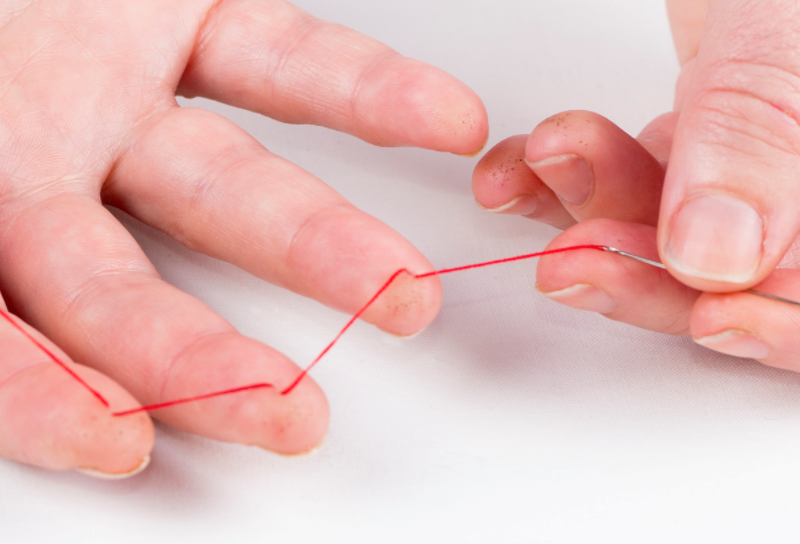Poked & Pinned: An Artist’s Journey

My art used to be abstract and formal: I made quilts and collages to explore shapes and color. In grad school, my professors took one look at my work and called my bluff: my art didn’t say anything about me. My carefully crafted, completely BS artist statement could wax poetic about the perfect shade of pink—but revealed none of my vulnerability. And good art is all about vulnerability.
I’ve had diabetes since I was 12, and though I’ve always tried to keep my numbers under control, it’s only in the last few years that I’ve gained any sort of psychological grasp on the disease. I used to bristle and tighten when anyone even mentioned the word “diabetes.” It invoked deep shame in me, as if I were a child who had done something horribly wrong and was being punished.
So I turned my work inward and exposed some of my most secret practices, like testing my blood sugar or revealing the scars on my belly from my pump infusion sets. There can be a lot of shame in these activities, at least for me, and I felt like reclaiming them would change them. It was a cathartic experience, and I felt as though I might be able to get power from what has often left me feeling powerless.
The Poked & Pinned photo series mimics ritual, transforming rarely-seen acts into ones that must be seen. As I sew, from finger to finger, the work becomes an amusement, like a game of cat’s cradle. I found myself addicted to the ritual, which revealed in my fingertips a constellation of scars from testing my blood sugar.
I realized as I was making this work that I am very comfortable with the blood and guts of my body—until I catch the look of horror on another person’s face when they see the dot of blood on my finger before I test or watch me pull out a syringe at a café. And then shame creeps in. I’m not a sterile, plastic model of a woman. I’m full of blood, with a pump cord that is always buttoned into my jeans and test strips that are always falling out of my purse.

A lot of folks don’t like to talk about disease and illness. Sometimes the photos make folks feel really uncomfortable. I’m ok with that. I don’t think art should always be comfortable. One thing I’ve learned in making intensely personal art is this: when you expose parts of yourself, people share parts of themselves with you. This can be some seriously powerful, deep stuff.
In exploring my own autoimmune disease, I’ve discovered the (often painful) story of autoimmune diseases in my family and learned how many of the women I grew up with often suffered in silent solitude. I’ve met so many other fierce powerful folks in the disability activism community who refuse to be silent and speak their truths every day. Sometimes I’m one of those folks, and sometimes my blood sugar is high or low or high then low and I want to sink into the deepest, darkest hole I can find.
When I recover, I make art.





